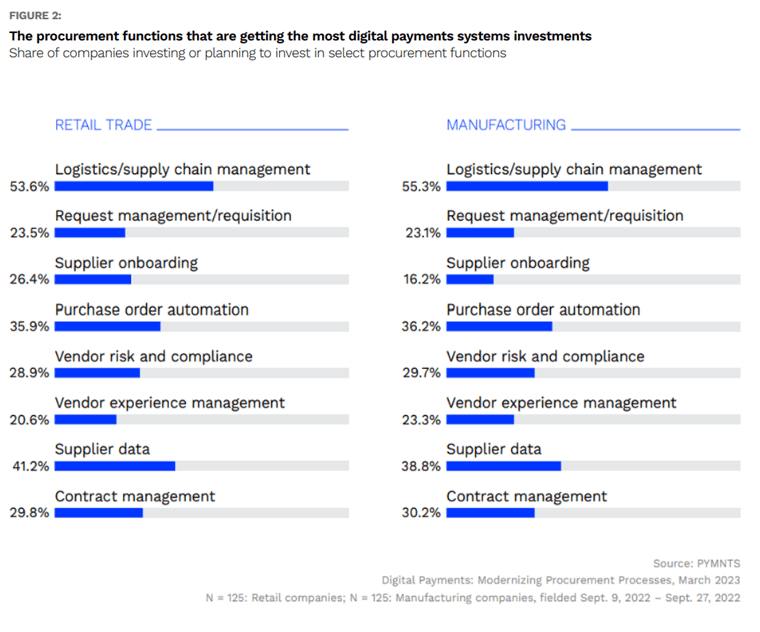Manufacturers’ Procurement Modernization Drives Innovations in Purchase Order Finance

Purchase orders, an often-overlooked step in the procurement process, is receiving renewed focus as companies seek to modernize their systems.
As supply chain pressures begin to ease from their pandemic-ushered volatility, businesses across sectors are settling into longer-term planning when it comes to their procurement processes. One step in this process, purchase orders, is seeing the most planned modernization investments by the manufacturing sector, as noted in the PYMNTS collaboration with Corcentric, “Digital Payments: Modernizing Procurement Processes.”

Perhaps because the manufacturing sector is dependent on raw materials and hard goods, it experienced particularly difficult pandemic-era disruption and has become the sector with the most planned procurement investments. Of surveyed sector businesses, 42% are already investing in procurement technology upgrades, with another 44% planning to. Included in these systems functions is purchase order automation, with 36% of manufacturers planning to invest in the function. Retail is close behind at 35.9%, trailed by finance and insurance (26%) and healthcare (17%).
One advantage of modernizing purchase order functions in particular is that it may open the door to earlier financing options than at the invoice stage. A company facilitating these efforts to plug part of the $1.7 trillion global sector trade gap is Madrid-based trade finance platform Twinco, focused on how small to medium-sized business (SMB) suppliers access credit. The firm does this by basing its risk assessment models on supplier performance instead of balance sheets. The performance-based financing approach allows Twinco to release funds at an earlier stage.
In a PYMNTS interview, Sandra Nolasco, co-founder and CEO of Twinco Capital, explained the benefits of financing purchase orders, which takes place earlier in the trade workflow than traditional financing efforts.
“Traditional supply chain finance methods are to fund the invoice, and therefore, only the payment terms,” explained Nolasco. “Funding the purchase order means reducing the financing costs imbedded within the whole chain, not just shifting the burden from the buyer to the supplier. … There are a lot of supply chain finance solutions out in the market, but most address the tail-end of supply chain finance, once the invoice is issued. There is not a lot of option on the production side of the supply chain.”
For manufacturers especially, modernizing procurement processes has taken on renewed priority now that more forward-looking planning can take place. Purchase order automation is a small but important function in that process, where automation can lead to both possible cost-cutting benefits and new lines of financing.

